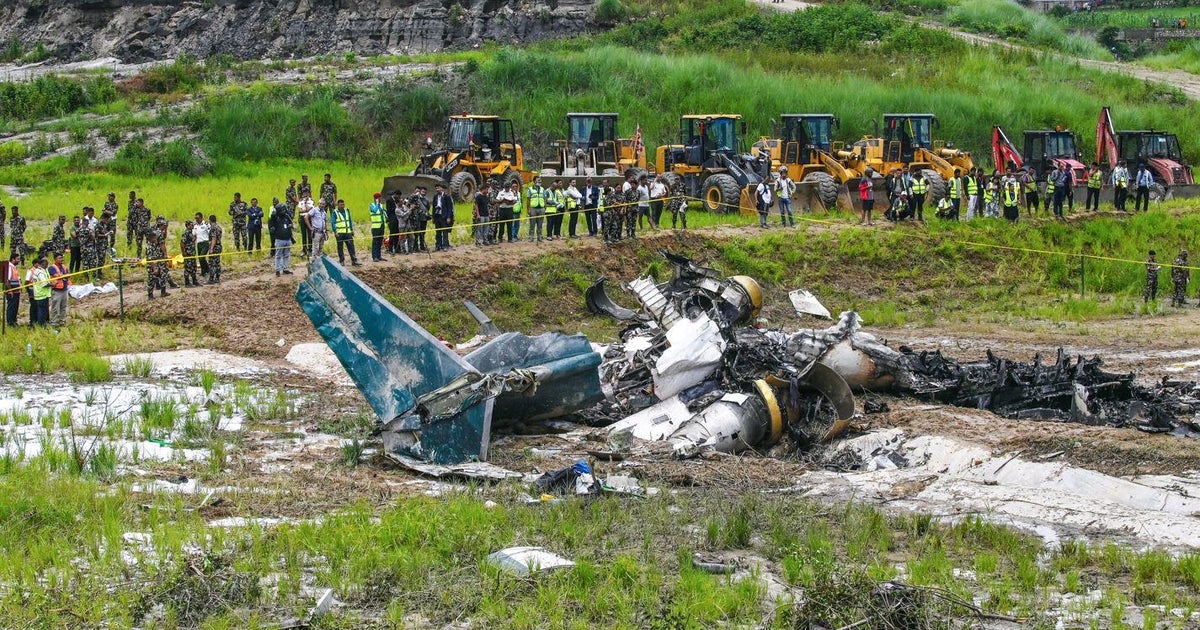What is a no-fly zone, and why won't the U.S. enforce one over Ukraine?
Since Russia's invasion of Ukraine began just over one month ago, Ukrainian President Volodymyr Zelenskyy has made numerous pleas to NATO and its allies to impose a no-fly zone over the country. In an impassioned address to a joint session of the U.S. Congress, Zelenskyy said it was vital to "protect" the sky over his country to stop Russia's incessant airstrikes and artillery fire.
"Is this a lot to ask for, to create a no-fly zone over Ukraine to save people?" he asked.
For the United States and its NATO allies, so far, the request has been too much. Below is a look at what a no-fly zone is, and why there isn't one over Ukraine.
What is a no-fly zone?
A no-fly zone is essentially a predetermined section of airspace in which military forces revoke access to all other aircraft. Enacting one means the country or countries imposing it take responsibility for both monitoring the designated airspace constantly to catch violations, and for suppressing or destroying any aircraft that violate its boundaries.
"What it would mean is that American and NATO pilots would be up in the air over Ukraine, patrolling the sky with orders to chase away, or shoot down, any Russian plane that came into Ukraine," CBS News' national security correspondent David Martin told CBS Boston about the implications of a no-fly zone over Ukraine.
That would "create a situation in which direct combat between U.S. and Russian pilots was a likelihood," Martin added.
Why no no-fly zone over Ukraine?
It is that distinct possibility of direct combat between nuclear armed nations — Russia and the U.S. — that has kept both President Biden and his allies from refusing to impose a no-fly zone over Ukraine.
The NATO alliance is made up of 30 member nations, but the U.S. is generally seen as the leading state and is the largest contributor both militarily and financially. The other members have stuck by the Biden administration's stance, with NATO Secretary General Jens Stoltenberg saying a no-fly zone over Ukraine "could end in a full-fledged war in Europe, involving many more countries and causing much more human suffering. So that's the reason why we make this painful decision."
He bases that dire assessment on Article 5 of the NATO charter, which states that an attack on any member nation will be considered an attack on all, obligating all member nations to respond in defense. So if a U.S. warplane were to be shot down over Ukraine enforcing a no-fly zone, for instance, it would be taken as an act of war against all 30 NATO members.
Russian President Vladimir Putin made it clear that he would see any third-party declaration of a no-fly zone over Ukraine as direct participation in the war.
"We will view them as participants of the military conflict, and it would not matter what members they are," Putin said during a meeting with female Russian pilots in early March.
Despite the repeated requests from Ukrainian officials, it also hasn't been clear how much a no-fly zone could do to stop Russia's devastating attacks on Ukraine's cities, which, as Martin pointed out, are being carried out from afar by "artillery and rockets and planes that are firing long range missiles — planes that never leave Russian airspace."
When have no-fly zones been used before?
The U.S has participated in four declared no-fly zones previously, according to the Congressional Research Service. They include Operation Deny Flight over Bosnia and Herzegovina from 1993-1995; Operation Northern Watch in Iraq from 1991 to 2002; Operation Southern Watch, also over Iraq from 1992 to 2003; and Operation Odyssey Dawn over Libya in 2011.
Historically, no-fly zones have been implemented to protect civilians, but they come at a cost.
The U.S. imposed the two no-fly zones over Iraq, in conjunction with the United Kingdom and France, following the Gulf War. The U.S. said they were enforced to protect the Kurdish minority in northern Iraq and Shiite Muslims in southern Iraq. Over that time period, between the two operations, it cost the U.S. on average $1.3 billion per year in today's dollars, from 1996 to 2001, according to the Center for Strategic and Budgetary Assessments.






